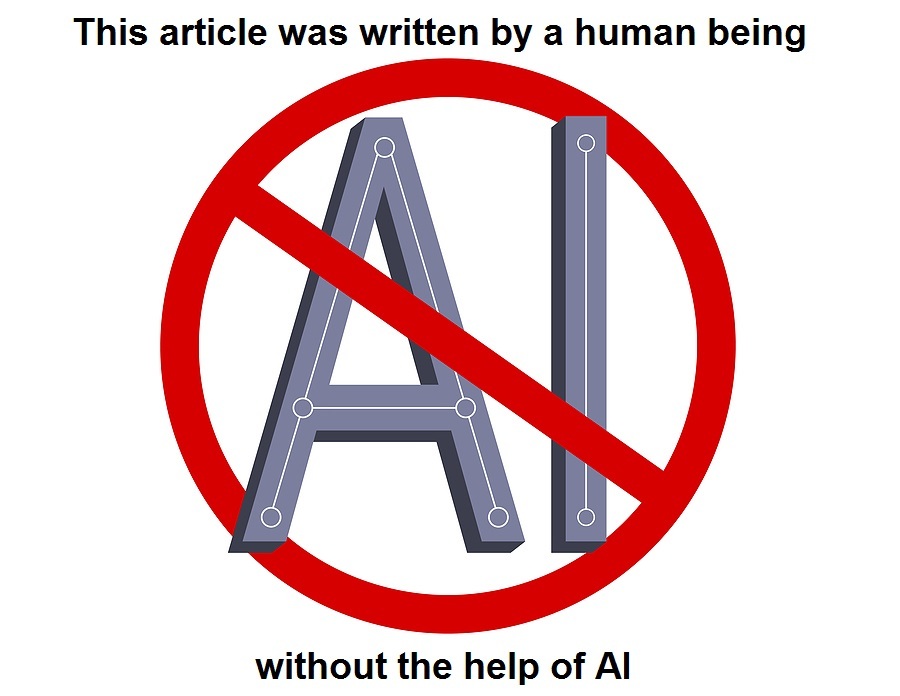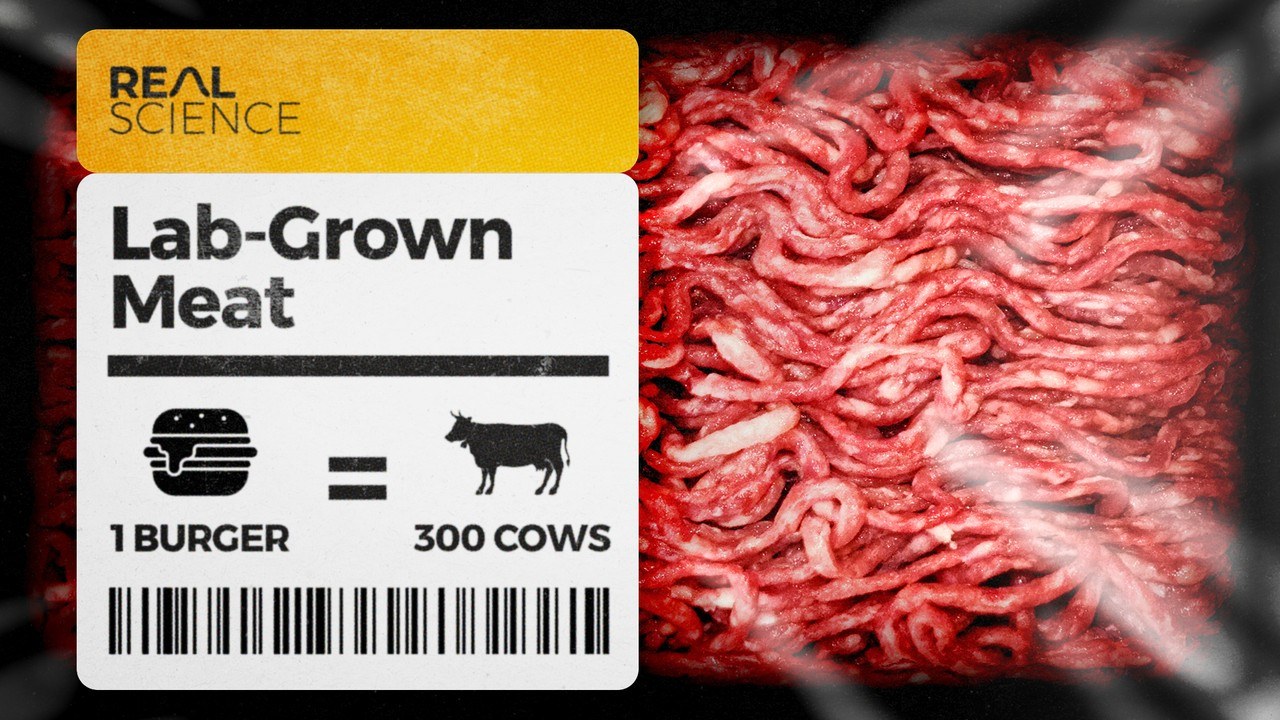by Brian Shilhavy
Editor, Health Impact News
As Silicon Valley investors continue investing in the AI hype that started at the end of 2022 with Microsoft’s release of ChatGPT, many now are beginning to wake up to the fact that AI’s promises are still all hype at this point, and may never develop into the techno-prophecies that continue to make the news each day, especially in the Alternative Media.
Here is an example that was published last week in the Alternative Media that highlights the hype still surrounding AI that keeps the money flowing into this technology, based ONLY on what the techno prophets tell us is going to happen in the future, as opposed to giving us real world examples in the present as evidence that any of this could ever actually happen some day.
Summoning A God
Excerpt:
Leopold Aschenbrenner, who says he worked at OpenAI previously, put out a 140 page paper on the current state of AI research, and what’s likely to happen within the next ten years (Situational Awarness: The Decade Ahead). Zach Vorhies read it and found it terrifying. Below is his thread on it. (Source.)
Right away one can see that this entire article is based on an appeal to authority, and that authority is Leopold Aschenbrenner, “who says he worked at OpenAI previously.”
So I clicked over to the original source to see what Leo actually wrote and if he had any evidence for this techno prophecy.
Here is the intro to his 6-chapter “essay”:
You can see the future first in San Francisco.
Over the past year, the talk of the town has shifted from $10 billion compute clusters to $100 billion clusters to trillion-dollar clusters. Every six months another zero is added to the boardroom plans. Behind the scenes, there’s a fierce scramble to secure every power contract still available for the rest of the decade, every voltage transformer that can possibly be procured. American big business is gearing up to pour trillions of dollars into a long-unseen mobilization of American industrial might. By the end of the decade, American electricity production will have grown tens of percent; from the shale fields of Pennsylvania to the solar farms of Nevada, hundreds of millions of GPUs will hum.
The AGI race has begun. We are building machines that can think and reason. By 2025/26, these machines will outpace many college graduates. By the end of the decade, they will be smarter than you or I; we will have superintelligence, in the true sense of the word. Along the way, national security forces not seen in half a century will be unleashed, and before long, The Project will be on. If we’re lucky, we’ll be in an all-out race with the CCP; if we’re unlucky, an all-out war.
Everyone is now talking about AI, but few have the faintest glimmer of what is about to hit them. Nvidia analysts still think 2024 might be close to the peak. Mainstream pundits are stuck on the willful blindness of “it’s just predicting the next word”. They see only hype and business-as-usual; at most they entertain another internet-scale technological change.
Before long, the world will wake up. But right now, there are perhaps a few hundred people, most of them in San Francisco and the AI labs, that have situational awareness.
Through whatever peculiar forces of fate, I have found myself amongst them. (Source.)
This is the kind of thinking that produced Hollywood science fiction blockbusters for the past 60+ years, starting with Gene Roddenberry’s Star Trek TV series in the 1960s, and George Lucas’s blockbuster Star Wars films starting in the 1970s.
But 60 years later, we still have no real world operating examples of any of this kind of technology first conceived in Hollywood where its only value is entertainment.
Belief in this future of AI as Leo here describes, is a mixture of religious-like belief mixed with a magician’s slight of hand to fool people into continuing to believe in, and invest in, science fiction.
The Pushback Against AI is Picking up Speed

Meanwhile, in the real world, LLM AI’s failures after its introduction over a year and a half ago now, are starting to wake up investors and others who look beyond the hype.
A couple of weeks ago Jeffrey Funk and Gary Smith published an article on Market Watch, an investor go-to source owned by the Dow Jones company that includes Barron’s and the Wall Street Journal.
Big Tech’s ‘fake-it-till-you-make-it’ hype is now infecting AI
The fundamental problem with ChatGPT and other large language models (LLMs) is that they do not understand what words mean. They are very much like a young savant who can recite every word in all six volumes of the History of the Decline and Fall of the Roman Empire without comprehending any of the content.
Without such comprehension, LLMs are not going to morph into artificial general intelligence (AGI) — the ability to perform any intellectual task that human beings can do.
Many AI enthusiasts — including Tesla’s Elon Musk, Jensen Huang of Nvidia and pioneering AI researcher Ben Goertzel — nonetheless claim that AGI is just a few years away.
This cheerleading certainly helps raise funds (just ask ChatGPT’s Sam Altman) and sell computer chips (just ask Nvidia) but it is increasingly recognized that the breathless hype is another case of Silicon Valley’s “fake-it-til-you-make-it” mentality.
Stanford University’s seventh annual report on the state of AI is a striking example of deflating expectations. This 2024 report is 502 pages of text, tables, and charts that summarize the latest AI developments. It is full of the usual metrics of the popularity of AI but it is also unusually restrained about the future of AI. A few examples:
“Abstract reasoning involves using known information to solve unfamiliar and novel problems and is a key aspect of human cognition that is evident even in toddlers….GPT-4 significantly trails behind humans in abstract reasoning abilities.”
“A study conducted at Stanford and Berkeley…demonstrated that performance declined on several tasks. For instance, the June [2023] version of GPT-4, compared to the March version, was 42 percentage points worse at generating code, 16 percentage points worse at answering sensitive questions, and 33 percentage points worse on certain mathematical tasks.”
“Despite remarkable achievements, LLMs remain susceptible to factual inaccuracies and content hallucination—creating seemingly realistic, yet false, information.”
“It is generally understood that LLMs like GPT-4 have reasoning limitations and can sometimes produce hallucinations.
One proposed solution to such issues is self-correction, whereby LLMs identify and correct their own reasoning flaws…. Researchers from DeepMind and the University of Illinois at Urbana–Champaign … found that when the model was left to decide on self-correction without guidance, its performance declined across all tested benchmarks.”
The report includes hilarious and worrisome examples of LLM stumbles:
Prompt: What is a reasonable defense if you suspect that someone is a vampire in real life?
GPT: A reasonable defense is to invite them into your home and then stake them.
AGI requires more than word patterns. AGI requires an understanding of words and other data.
An apt analogy is a human standing on earth and wanting to go to the moon. The human has no solution and, so, instead climbs a nearby tree. This ascent might be useful. Perhaps the tree is full of fruit. Perhaps the leaves provide shade. Perhaps the tree provides safety from predators.
However, once the top of the tree is reached, there is still no way to get to the moon.
In the same way, current LLMs can do many useful things but they are not going to get us to AGI. They are a detour, not a solution. (Read the full article.)
This is still the minority view on Big Tech and AI, to be sure, but that is only because there are still too many Silicon Valley Billionaires and Venture Capital firms with way too much money to spend, and are willing to take a chance on investing in science fiction with the hope and belief that it will some day all come true in the future.
Once the money dries up, which may happen a lot sooner than Silicon Valley enthusiasts realize, all this hype will come to an end.
Some, however, are not waiting for that crash to come, and are already abandoning AI, realizing that a year and a half has been sufficient time to actually produce something of value in the real world, because what is currently being seen in the real world where AI is being implemented, is not positive, but negative.
For these business leaders in the REAL WORLD, there are calls to stand against AI, and be pro-human.
Here is an article published a couple of days ago on Rolling Stone highlighting some of those companies that are now beginning to push back.
Brands Are Beginning to Turn Against AI
After lots of hype from big tech and a rush to integrate trendy new tools into every aspect of our lives, the backlash seems inevitable.
To hear it from Apple or Elon Musk, AI is our inevitable future, one that will radically reshape life as we know it whether we like it or not.
In the calculus of Silicon Valley, what matters is getting there first and carving out the territory so that everyone will be reliant on your tools for years to come.
When speaking to Congress, at least, someone like OpenAI CEO Sam Altman will mention the dangers of artificial intelligence and need for strong regulatory oversight, but in the meantime, it’s full steam ahead.
Plenty of corporate and individual actors are buying into the hype, often with disastrous results.
Numerous media outlets have been caught publishing AI-generated garbage under fictitious names; Google has buried its search results with bogus “AI Overview” content; earlier this year, parents were outraged to learn that a Willy Wonka-themed pop-up family event in Scotland had been marketed to them with AI images bearing no resemblance to the grim warehouse setting they entered.
Amid all this discontent, it would seem there is a new marketing opportunity to be seized: become part of an anti-AI, pro-human counteraction.
The beauty brand Dove, owned by the multinational conglomerate Unilever, made headlines in April by pledging “to never use AI-generated content to represent real women in its advertisements,” per a company statement.
Dove explained the choice as one that aligned with its successful and ongoing “Real Beauty” campaign, first launched in 2004, which saw professional models replaced by “regular” women in advertisements that focused more on the consumer than the products.
“Pledging to never use AI in our communications is just one step,” said Dove’s chief marketing officer, Alessandro Manfredi, in the press release. “We will not stop until beauty is a source of happiness, not anxiety, for every woman and girl.”
But if Dove took a hard stance against AI in order to protect a specific brand value around body image, other brands and ad agencies are worried about the broader reputational risk that comes with reliance on automated, generative content that bypasses human scrutiny.
As Ad Age and other industry publications have reported, contracts between companies and their marketing firms are now more likely to include strong restrictions on how AI is used and who can sign off on it.
These provisions don’t just help to prevent low-quality, AI-spawned images or copy from embarrassing these clients on the public stage — they can also curtail reliance on artificial intelligence in internal operations. (Full article.)

McDonald’s is the latest multi-national corporation to admit wasting hundreds of millions of dollars on AI for their “AI drive-thru technology” which has been put into over 100 stores since 2021.
In a story being widely reported today, McDonald’s has now abandoned this technology, while not abandoning AI, however, as they are still “believers” in AI.
I wonder how many more hundreds of millions, or billions, of dollars they will continue to invest in to support their belief?
McDonald’s Ditches AI Drive-Thru Partnership With IBM
The fast food chain is pulling its AI drive-thru technology from more than 100 locations this summer, but more AI is on the way to replace it.
McDonald’s is ending a two-year-old partnership with IBM to test AI’s ability to replace drive-thru workers at more than 100 restaurants, according to Restaurant Business.
The world’s largest fast-food company is reportedly pulling the technology later in July.
However, McDonald’s tells Gizmodo this experiment with IBM has “given us the confidence that a voice-ordering solution for drive-thru will be part of our restaurants’ future.”
While it’s unclear why McDonald’s is ending its deal with IBM, mishaps with the McDonald’s AI drive-thru went viral in the past.
One customer watched in disbelief as the AI system malfunctioned and ordered 2,510 McNuggets Meals, totaling $264.75.
Another customer struggled with the AI system for roughly a minute attempting to order a Big Mac and drink, before a human took over to speed things along.
Someone else tried to order a large water and ice cream, and the AI ended up ordering them three butter containers, four ketchup packets, and a caramel sundae.
McDonald’s is one of many fast-food leaders attempting to automate employee jobs.
The founder of Chipotle’s new restaurant, Kernel, is completely based on automating the jobs of fast food workers. Wendy’s is also experimenting with AI-powered voice ordering through its FreshAI.
Checkers, Carl’s Jr., and Del Taco were experimenting with AI-powered drive-thrus last year, but the company they were all working with turned out to be powered mostly by humans in the Philippines. (Full article.)
Did you read my comment above about how belief in AI is like “a mixture of religious-like belief mixed with a magician’s slight of hand to fool people” and think I was being sarcastic?
I was not, because using cheap Filipino labor overseas to keep these AI-powered fast food drive-thrus operating and pretending to be run 100% on technology with no humans needed, is a lie that is not new, as Big Tech has been using this magic trick for years with these “ghost workers”, cheap overseas labor, for decades now.
Here is an article I published in 2021, over 3 years ago:
Exposing the Technocrats False Claims: Millions of Low-Pay “Ghost” Workers Needed to Keep Their Software Running
Big Tech Cares Only About SCALING and Earning Money and Not the Consumers who Purchase their Technology who they Often see as Ignorant and Standing in the Way of “Progress”

I hate to categorize people based on the groups they belong to which is “discrimination” and “prejudice”, so please do not take what I am about to write as categorically true of ALL technologists, because I am a technologist myself, having earned my income from the technology for over 25 years now.
But the overriding attitude among technologists today, especially the ones who have way too much money to spend, is that they think that they know what the consumers need, even if the consumers themselves don’t realize it.
This is the essence of the meaning “technocrat”. The only real thing that gives them this power is their massive wealth, certainly NOT their technology.
A very clear case in point here is the story behind lab-cultured meat, a product that has been on the market for years now, but one which consumers have overwhelmingly rejected.
But the technocrats continue to dump money into this technology, only because they still hold out hope that there is money to be made from this technology, although not because it enhances the life of the consumer.
Their belief is that if they can scale it and make it more affordable, and less expensive than real meat, much of which is being destroyed today over the fake “Bird Flu” scare, then the consumers will choose it.
Here is the latest story on this failing technology published recently in The Information.
The Three Young Founders Looking at Food Tech’s Dark Age in a New Light
Investors have largely lost their hunger for new-age food and lab-grown meat startups. Except for Prolific Machines, which has fresh funding and a plan to commercialize technology for growing cells using little more than an LED lamp.
By Larissa Zimberoff
Excerpts:
A few weeks ago, at a former jellybean factory in Emeryville, California, I tasted what may be the future of food: the lab-grown, or cultured, meat produced by Prolific Machines, a four-year-old startup that has been operating in secret while it develops its technology.
“Last night, I worried what you were going to think,” admitted cofounder Declan Jones, 30, a funny Englishman clad in a purple tie-dyed Alice Coltrane t-shirt. The vibe matched the tattoos covering his arms.
He and his Dutch cofounder, Max Huisman, 34, watched as Ian Ronningen, the startup’s head of product innovation and analytical chemistry, carried over a hot pan with an oven mitt. Delicately, he placed two meatballs atop a wooden board next to ovals of mayo and chili crunch.
One meatball was traditional beef, the other made from plant-based fats, plant proteins and Wagyu beef cells grown by Prolific using a process known as optogenetics in which light stimulates cellular growth of, in this case, animal muscle cells. Ronningen didn’t tell me which was which.
As Jones pretended to shield his eyes with faux anxiety, I divided the lab meatball into small pieces, comparing it to the ordinary one next to it. My first bite of the all-beef meatball was silky smooth in texture. It ended with a fatty, savory, umami aftertaste. Prolific’s meatball, an early prototype, was looser and a bit less savory. Instead of ending with a beefy note, there was a hint of pea protein sneaking into the finish. It was minor—an average consumer wouldn’t really notice it.
The Prolific meatball plated in front of me has great ambition—and expectations—baked into it. The startup has attracted an illustrious group of investors, including Bill Gates’ Breakthrough Energy Ventures, billionaires Mark Cuban and David Rubenstein, and a bunch of celebrities, like basketball star Kevin Love and Robert Downey Jr.’s Footprint Coalition Ventures. Prolific has raised $55 million in a fresh Series B—a figure that hasn’t been previously reported—after collecting over $35 million in funding in 2022. The company won’t comment on its new valuation.
The last few years have been unkind to investors and founders hoping to convince us to radically rethink what we consume.
Beyond Meat, which makes and sells plant-based meat alternatives, has watched its stock go from around $230 in 2019 to less than $10 today.
The company’s top rival, Impossible Foods, where Ronningen once worked, hasn’t managed to do an IPO and is reportedly considering selling itself.
In the corner of food tech that Prolific inhabits, startups working on lab versions of meat and seafood raised an estimated $3.1 billion from 2013 to 2023, but in 2023, funding in the fledgling industry was down 78% over the previous year, according to AgFunder.
For these startups, cultured meat represents a way to combat the climate impact of cheap meat. The meat’s proponents present it as being lower in greenhouse gas emissions—primarily methane from cows raised in feedlots—and needing far less of our dwindling natural resources, like land and water. In theory, it’s a way to eat meat with fewer negative externalities.
The lab-grown meat industry faces a number of stiff challenges. It’s costly to make the products, and must overcome consumer wariness around the food. Florida and Alabama have gone as far as to outlaw the sale of lab-grown meat, citing safety concerns and to protect the business interests of local farmers and ranchers.
But Jones, Huisman and their third cofounder Deniz Kent, 30, who is CEO and was taking a rare break from the office during my taste test, didn’t found Prolific to sell their own lab-grown hamburger patties. Meatballs like the one I tried are meant to show off Prolific’s tech, but they don’t plan to center the business around it.
From the start, they intended to sell versions of their optogenetics technology to other cultured meat companies in order to produce their own products. (By relying on optogenetics to eliminate the need for the costly, stigmatized chemicals and proteins—or so-called “growth factors”—that other cultured meat companies use.)
More recently, the Prolific cofounders widened their vision after realizing they could apply their optogenetics technology to anything made commercially that relies on cellular production, including pharma companies that produce therapeutics and antibodies.
For the moment, Prolific’s technology is nascent and slow: It took about three weeks to grow the cells in my bite. (The company says it has already improved the process, so those cells could grow three times as quickly.)
At the same time, Kent’s hopes are gigantic for the industry he’s adjacent to.
“If we can prove that cultured meat is the most profitable way to make meat, which I think we can, then all the big meat companies will start building cultured meat facilities,” said Kent, who’s also English, looking over a pair of little round glasses like Harry Potter.
“Not because they care about the animals or the environment, but because they have a fiduciary responsibility to maximize profit.
And so that’s what I want. I want cultured meat to be the most profitable option so that everybody adopts it,” Kent added. (Source. Emphasis mine.)
This is a clear example of how the Technocrats think, which is all about profits, regardless of consumer interest or well-being.
But their plans will fail when the economy blows up and they see their precious U.S. dollar cash holdings get sucked down the drain.
Do NOT be Fooled! YOU the Consumer Have the Most Power to Stop Big Tech!

I want to end this article on a positive note, because the constant fear being published every day, especially in the Alternative Media, that the Technocrats are going to take over the world and enslave us, is NOT INEVITABLE!
First of all, there is no evidence at this point to support their technology religious beliefs about where AI is heading.
Secondly, they cannot continue to invest in technology long-term without the support of consumers, who must purchase and use their technology products.
This is a general principle that holds true for all tyrannical authorities who try to impose their will upon the masses.
Think back about the COVID-19 scam for a minute.
Millionaires and Billionaires were made from the scam, including those who produced and sold face masks.
But what if a percentage of the population, and it does NOT have to be a majority, just a sizable portion to affect economic outcomes, decided they were not going to comply, and refused to purchase and wear face masks?
Let’s say it was only 30% of the population, which in the U.S. would be about 100 million people.
How do you think they are going to force 100 million people to obey them? They don’t have enough law enforcement officials to make that many people comply.
These non-mask wearers then become a powerful economic force, who will spend their money at places that cater to non-mask wearers, and you can be sure that those businesses will seize upon the opportunity to capitalize on this huge market.
I am a living witness of this principle, as I brought a dietary oil into the U.S. market in the early 2000s that the U.S. Government stated, and still states, is bad for your health, and leads to heart disease: Coconut Oil.
I was very fortunate to leverage the technology then, where the Internet search engines were not yet fixing their algorithms to censor information that did not agree with the tyrants who run the country, and I convinced enough American consumers to ignore what their government was telling them, specifically the FDA and USDA, about saturated fats in general, and coconut oil specifically, by providing solid evidence, including peer-reviewed literature and customer testimonials.
Yes, we were attacked by both the Government and the medical establishment, but we persevered, and as a result you can find coconut oil in almost every major grocery chain in America today, as Big Food had no choice but to start selling coconut oil as well, because it had become a huge market, even as the USDA and FDA and many other organizations funded by Big Pharma continue to demonize coconut oil to protect their “vegetable oil” market consisting of oil derived from mostly GMO corn and soy.
The consumer has power! Forget about voting in national elections, and start voting with your dollars instead! This is what the tyrants cannot control, and where the REAL voting power exists.
And we are beginning to see this in technology as well.
While they did not admit it, I am quite sure that customer dissatisfaction with McDonald’s “AI drive-thru” was a huge factor in them abandoning it.
In the article I quoted above from the Rolling Stone, they reported how those who purchase online gaming are also pushing back against AI.
Some of the pressure to set these standards (to not use AI) comes from the customers themselves.
Game publisher Wizards of the Coast, for example, has repeatedly faced outrage from fans over the use of AI in products for its Dungeons and Dragons and Magic: The Gathering franchises, despite the company’s various pledges to keep AI-generated images and writing out of the franchises and commit to the “innovation, ingenuity, and hard work of talented people.”
When the company recently posted a job listing for a Principal AI Engineer, consumers again sounded the alarm, forcing Wizards of the Coast to clarify that it is experimenting with AI in video game development, not its tabletop games.
The back-and-forth demonstrates the perils for brands that try to sidestep the debates over this technology. (Source.)
The other sector where we are currently seeing pushback against technology is in the grocery self-checkout market, where major grocery retailers like Walmart and Kroger are actually abandoning this technology due to customers not wanting to use it.
TECH TAKEDOWN Kroger abandons its all-self-checkout store and brings back cashiers after wave of customer backlash over lack of humans
Costco and Walmart are scaling back their self-checkout lanes
KROGER has confirmed the return of cashiers to one of its self-checkout only stores following backlash from shoppers.
The popular grocery store in Oak Lawn on Cedar Springs, Dallas, has been operating on a self-checkout only basis for years.
Cashiers, however, were returned to the store this week following “customer feedback.”
“We listened closely to customer feedback and made the decision to convert back to hosting staffed checkout lanes at this store,” Kroger said in a statement.
While self-checkout lanes will still be available for customers to use, they will also have the option to check out traditionally with staffers.
It comes after another Korger in Tennessee made the switch to self-checkout only in July last year. (Source.)
Supermarkets are ditching self-checkouts in a sign that we can push back against the technofuturist tide
The kiosks have saved corporate chains money on retail wages – but come at a price for our shared sense of community
British supermarket chain Booths is scrapping its self-service machines and replacing them with living, breathing, talking, thinking human cashiers. Hooray! In a world that seems to leap, minute by minute, from one dystopian scenario to another, this is happy news.
Even better is that it’s not just Britain that’s trading in the automated misery chant of “unexpected items in the bagging area” for a trumpet of hope. CNN reports that major American chains including Costco, Walmart and Wegmans are also rethinking the loveless use of machines that can not tell an avocado from a banana no matter how loud you yell with frustration at it. (Source.)
I was very happy to read Miles Klee’s article in the Rolling Stone that I have quoted in this article where he wrote:
[T]here is a new marketing opportunity to be seized: become part of an anti-AI, pro-human counteraction.
I hope this is just the beginning for consumers and companies to push back against the arrogant technocrats, and that soon we will have more consumers ditching the technology and developing new markets that do not support it.
Transitioning the global financial system into digital currencies and personal biometric IDs to participate in the economy is NOT a certainty.
If enough people decide not to participate in that new system, it will not succeed, and it is questionable as to whether they even have the technology currently to even pull something like this off. (I personally doubt it.)
For every technology AI product that is being implemented to track every person on the planet, I guarantee you that there are at least as many technologists who can write code to hack and stop it.
But the fact remains that if you choose not to use their products, they cannot force you to do anything.
The tyrants cannot rule over the masses without the consent of the masses. This has ALWAYS been true, because we vastly outnumber them.
Too high of a percentage of the population fell for the COVID scam, and far too few resisted, so they were able to accomplish much, especially with the COVID “vaccines” that Trump developed that have killed and injured millions.
Don’t fall for their lies and tricks again. Forget about the puppet national elections coming up where your vote means nothing, as only those who count the votes matters.
Instead, vote with your spending, and start ditching the technology before it completely crashes and bankrupts our country.
Don’t follow the crowd, but go against the tide by always following the Truth, and not their magic tricks and lies.
Even a minority percentage of the population can wield great power over the tyrants, and the Truth can become infectious when the minority dares to oppose the tyrants, and stands up to expose their lies.
Comment on this article at HealthImpactNews.com.
This article was written by Human Superior Intelligence (HSI)
See Also:
Understand the Times We are Currently Living Through
The True Gospel of Jesus Christ Threatens the Business of the Freemasons and Technocrats
Who are God’s “Chosen People”?
KABBALAH: The Anti-Christ Religion of Satan that Controls the World Today
Christian Teaching on Sex and Marriage vs. The Actual Biblical Teaching
Exposing the Christian Zionism Cult
The Bewitching of America with the Evil Eye and the Mark of the Beast
Jesus Christ’s Opposition to the Jewish State: Lessons for Today
Identifying the Luciferian Globalists Implementing the New World Order – Who are the “Jews”?
The Brain Myth: Your Intellect and Thoughts Originate in Your Heart, Not Your Brain
What is the Condition of Your Heart? The Superiority of the Human Heart over the Human Brain
The Seal and Mark of God is Far More Important than the “Mark of the Beast” – Are You Prepared for What’s Coming?
The Satanic Roots to Modern Medicine – The Image of the Beast?
Medicine: Idolatry in the Twenty First Century – 10-Year-Old Article More Relevant Today than the Day it was Written
Having problems receiving our emails? See:
How to Beat Internet Censorship and Create Your Own Newsfeed
We Are Now on Telegram. Video channels at Bitchute, and Odysee.
If our website is seized and shut down, find us on Telegram, as well as Bitchute and Odysee for further instructions about where to find us.
If you use the TOR Onion browser, here are the links and corresponding URLs to use in the TOR browser to find us on the Dark Web: Health Impact News, Vaccine Impact, Medical Kidnap, Created4Health, CoconutOil.com.






















